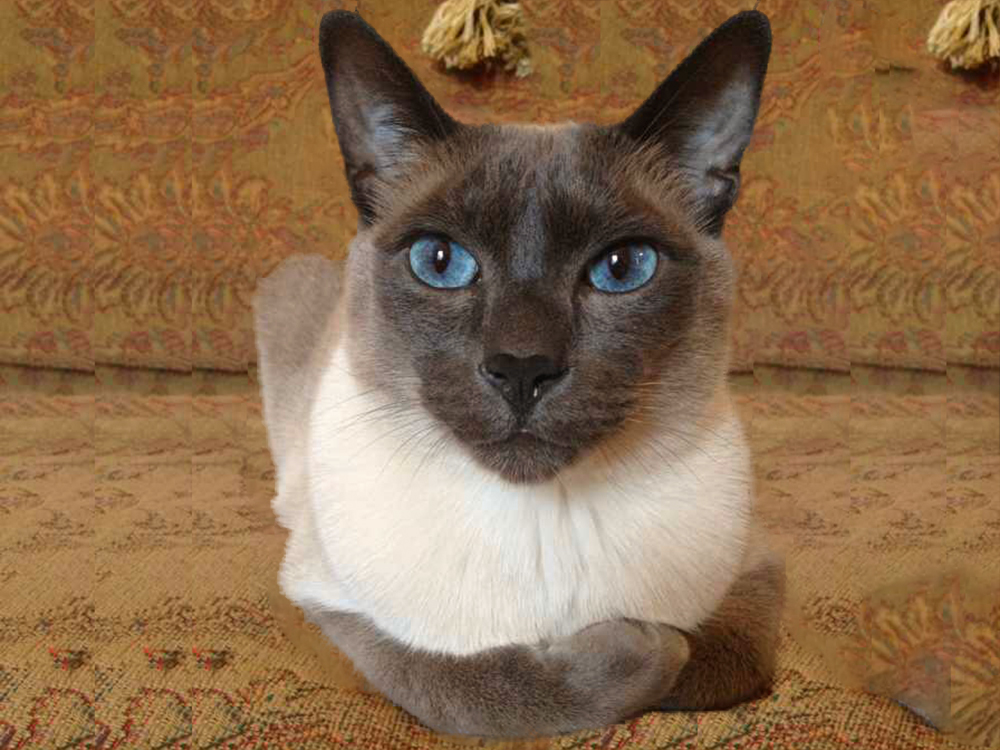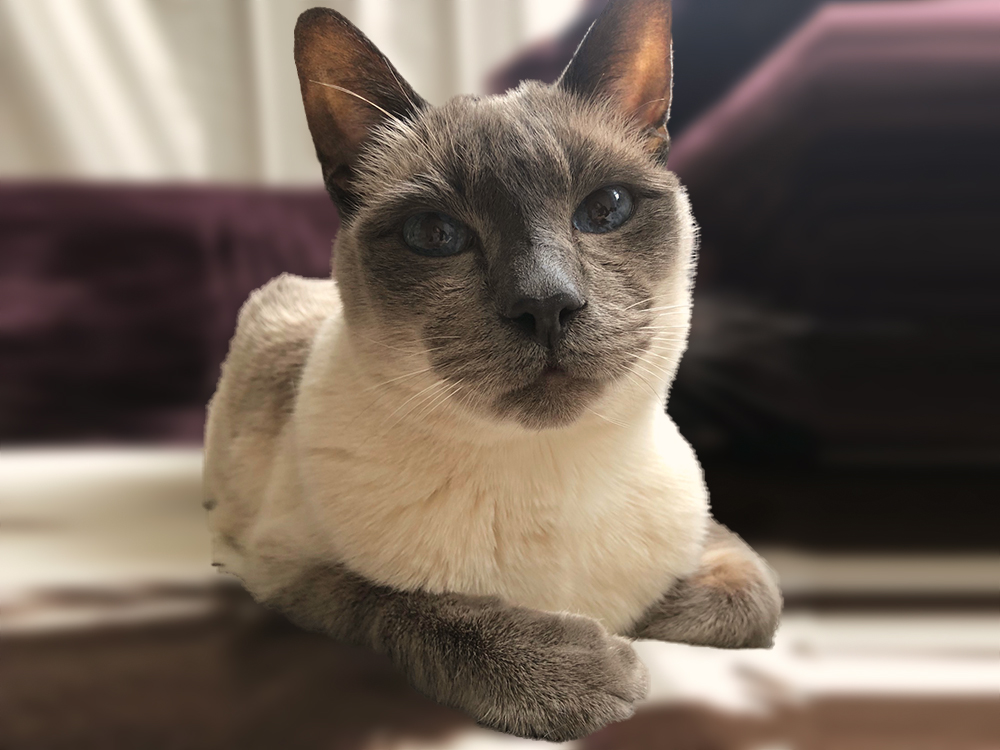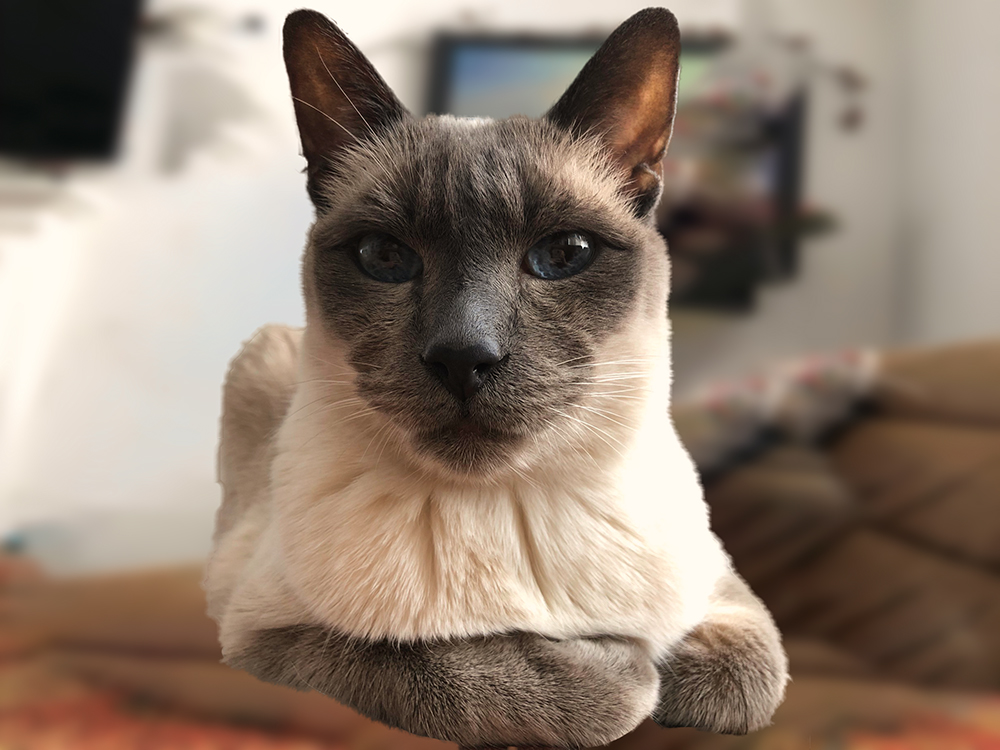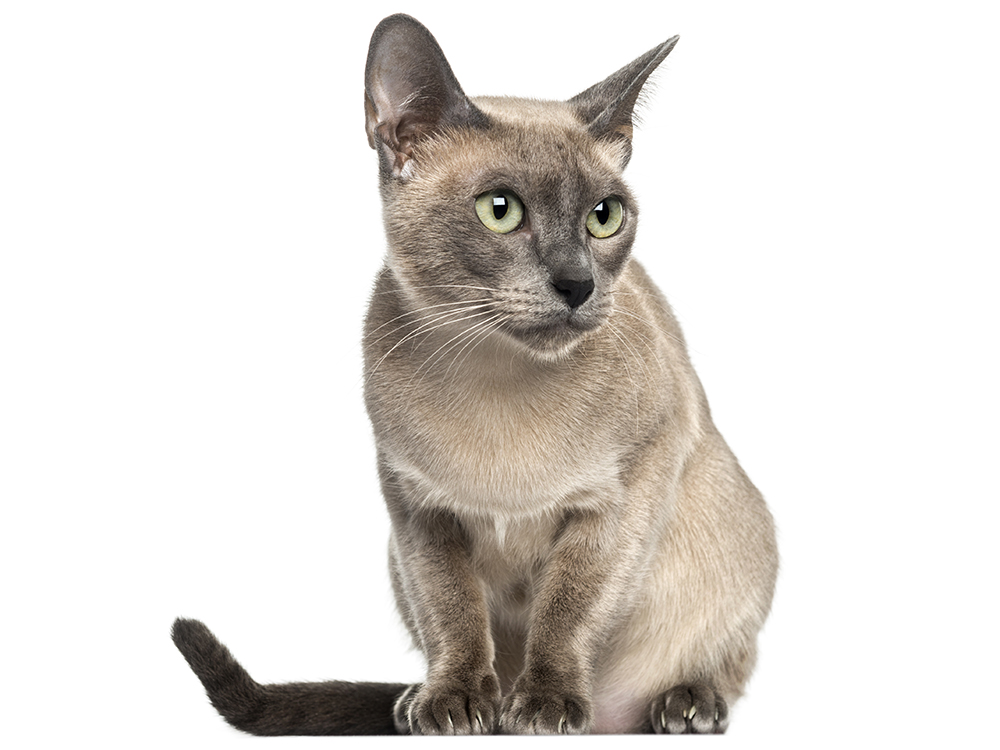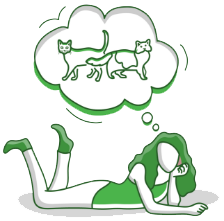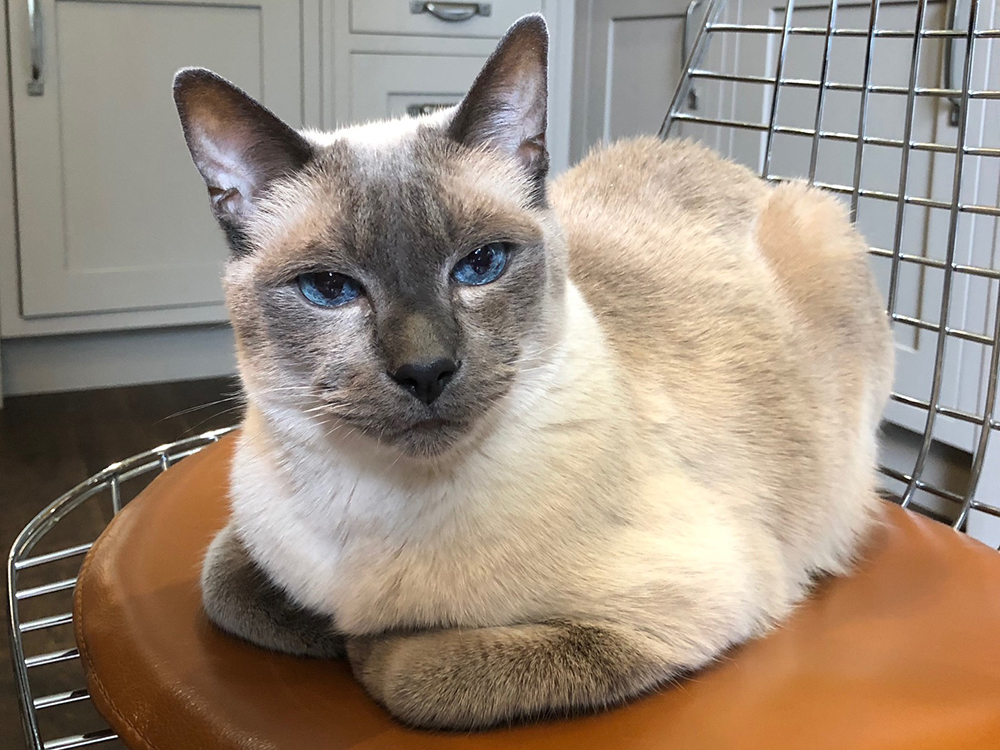
Tonkinese Breed Pictures
Vital Breed Stats
| Weight: | 4 - 5 kg M | 3 - 5 kg F |
| Life Expectancy: | 12 - 15 years |
Breed Characteristics
| Size: |  |
| Grooming: |  |
| Good with Children: |  |
| Good with other pets: |  |
| Affectionate: |  |
| Active Level: |  |
Give a thumbs up if you love the Tonkinese

0
More About the Breed
History
It has been speculated that the Tonkinese has existed for hundreds of years, although it was only deliberately developed recently. This cat breed was produced by crossing a Siamese cat with a Burmese. The aim was to develop a feline with the intelligence and affectionate nature of both parent breeds. A milder voice than the Siamese was also desired, as well as the aqua-eyed, mink coloured variety.
Accounts say that the Tonkinese were first brought to England from Siam (now Thailand) in the 1800s as “Chocolate Siamese.” In the US, this breed, including the Burmese, came from a small cat named Wong Mau. This feline ancestor, imported in 1930 by Dr. Joseph Thompson, was thought to be a Chocolate Siamese.
In the 1960s, the Tonk emerged in the US after Canadian breeder Margaret Conroy crossed the said Southeast Asian cat breeds. The resulting kittens were called “Golden Siamese” as they appeared to inherit the traits of both parent breeds.
After breeders managed to produce cats with a consistent head and body proportions, they started to call the new variety Tonkinese. The name was inspired by Vietnam’s Bay of Tonkin, although the breed has no links to the said country.
In the years that ensued, many of the international breed organisations accepted the newly developed cat breed. It was first acknowledged in Canada in 1971. In 1984, it was assigned championship status by the Cat Fanciers’ Association. In 2001, it was officially recognised as an established breed.
Appearance and Grooming
The Tonkinese is attractive and elegant, with glistening eyes and an athletic, muscular body. It is medium-sized, very well-proportioned, and is heavier than it appears, like its Burmese parent. Its weight ranges from 6-210 lbs.
Its head is mildly wedge-shaped that is slightly rounded and is a bit longer than it is wide. Its muzzle is blunt and is as long as it is wide. When seen from the side, the Tonk’s chin aligns with its nose tip. Its facial features are inherited from its Siamese parent.
This cat’s medium- sized ears have oval tips and hair that lies closely to its body. Its eyes are slanted towards the outer edge of its ears. Tonkinese eye colours are stunning. The aqua colour is the most impressive.
The Tonk’s compact and sleek body is supported by long, slender legs that are proportionate to the rest of their body. Its back legs are longer than the front. They end in oval-shaped paws that only have 4 toes on the back ones and 5 on the front pair. Its tail is of moderate length and also proportionate to the body.
The Tonkinese cat’s short coat is one of its most distinctive features. Silky, soft, and striking, its fur has a beautiful sheen. Its colour range includes platinum, blue, champagne, and natural (seal type). Its coat patterns can be solid, pointed, or mink. The point hues appear on the animal’s face, ears, tail, and feet. The colour takes about 16 months to fully manifest and may darken as the feline ages.
The shade of the Tonk’s coat depends on the availability of light as the cat grows. Cooler temperatures manage the enzyme that triggers the darkening of the fur colour. This means that a colder climate results in a darker-coloured Tonkinese.
Temperament and Intelligence
The Tonkinese gets its intelligence and curiosity from its Siamese parent. Its personality is largely inherited from its Burmese side. Energetic, a natural entertainer, and social, the Tonk is an amusing pet. As such, it is a good feline for families who desire a playful cat. It gets along well with children and other pets.
Friendly and affectionate, this kitty loves human company and will follow its owners around. A lap cat that loves cuddles, the Tonk is wont to demand attention and is known to be vocal. It will talk back to its owners in lengthy conversations as it is not content with brief responses. It likes to be involved in the activities in the home and will not do well being left on its own constantly.
Being a smart kitty, the Tonkinese cat likes mentally challenging toys and seeks to master them. It can be taught tricks and even engage in a game of fetch. It likes to investigate and leap to high points to observe. It has a tendency for mischief when bored.
Nutrition and Feeding
The Tonkinese should be fed quality food that fulfils its nutritional needs. It should be consistently given the same food. If there are changes to its diet, those must be done gradually to prevent digestive issues. Its feeding schedule should also be consistent.
Provide small frequent meals to this kitty to keep it healthy. The portion should depend on the Tonk’s weight, age, and activity level.
Health and Exercise
On average, the Tonkinese’s life expectancy ranges from 12-15 years. It is a healthy breed and is not known to have health issues due to its strong genes. However, gingivitis is a genuine risk. To prevent dental issues, brush its teeth weekly.
Being a high energy and brainy cat, the Tonk should be allowed to roam and engage in stimulating physical activities. This kitty is an indoor-only pet, thus the need for much stimulation to simulate the great outdoors.
Cost of Ownership
Expect to spend £300-£700 for a well-bred Tonkinese cat. Insurance costs would reach £15 (basic) to £25 (lifetime) a month. For food, prepare to spend about £15-£20 monthly. For vaccinations, boosters, annual checks and other veterinary costs, pet care costs may add up to more than £600 a year.
On average, a Tonkinese owner will spend about £40-£60 per month. The insurance costs can also influence the expenses. For its lifetime (12-15 years), the costs can be as low as £5,760 to as high as £10,800 annually. This range does not include the expenses incurred in buying a Tonk kitten.
Tonkinese Breed Highlights
- The Tonkinese cat is affectionate, curious, and social . It is good with children and other animals, making it a wonderful family pet.
- Its attractive short coat is easy to maintain and sheds minimally. A weekly brushing is sufficient.
- As an intelligent and inquisitive feline, the Tonk likes mentally stimulating tasks and toys. It can be trained to perform tricks.
- Its athleticism and mischievous and crafty ways necessitate cat-proofing the home.
- This cat craves human company and loves cuddles. It cannot bear to be left alone.
- It does not have health issues due to its strong genetic heritage.






